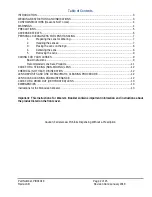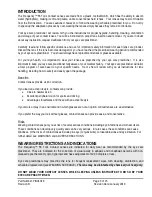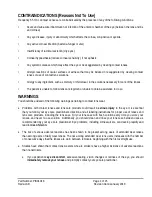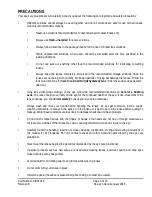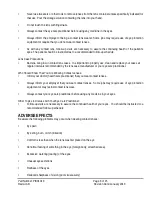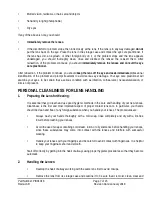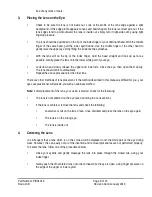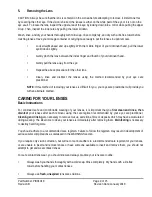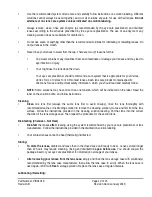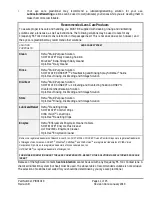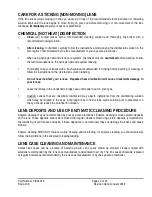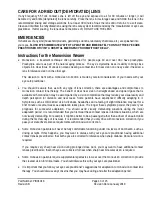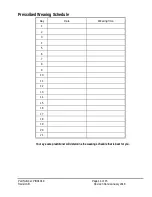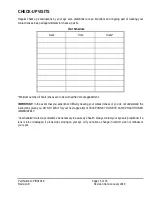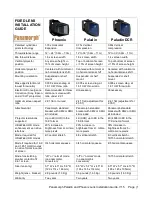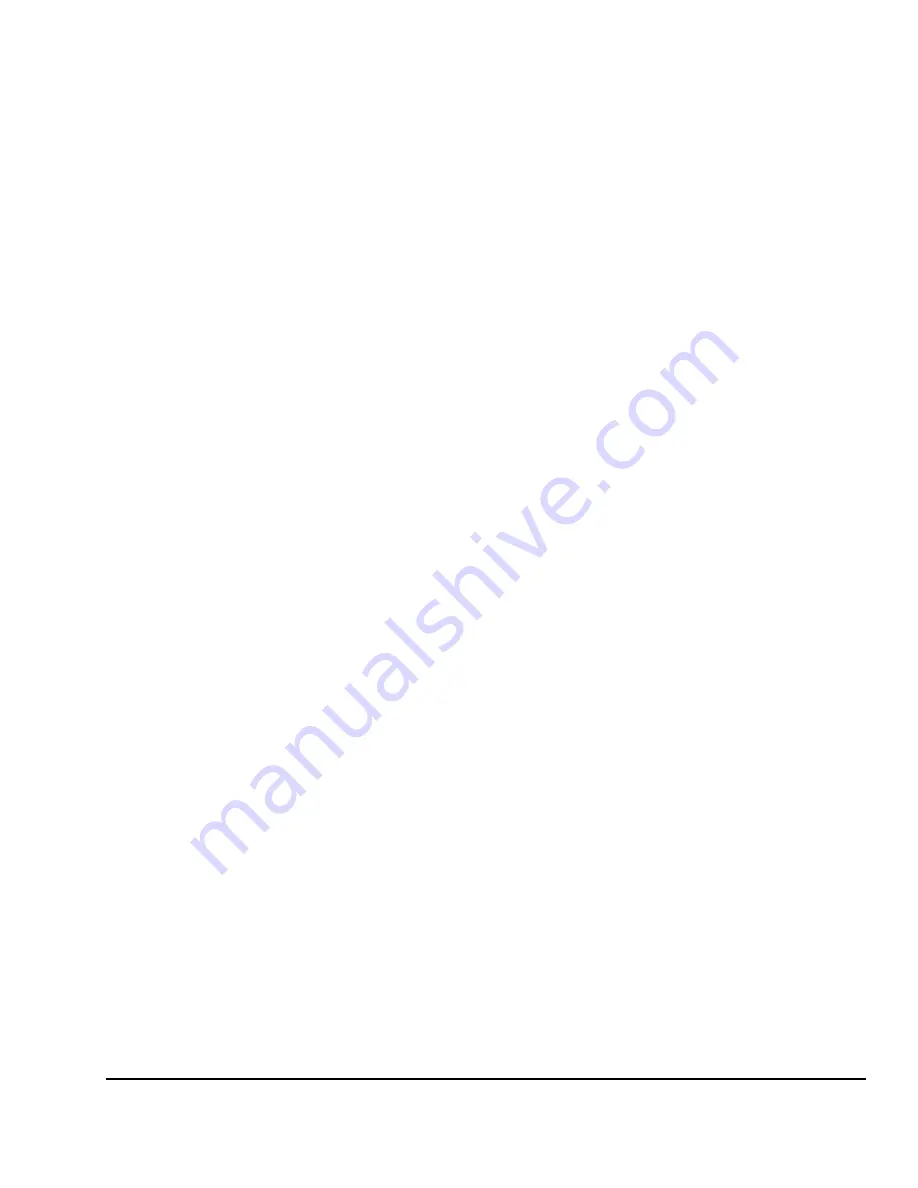
Part Number: PIB01018
Page 9 of 15
Revision B
Revision Date: January 2018
5.
Removing the Lens
CAUTION: Always be sure that the lens is centered on the cornea before attempting to remove it. Determine this
by covering the other eye. If the vision is blurred, the lenses is either on the white part of the eye or it is not on the
eye at all. To locate the lens, inspect the upper area of the eye by looking down into a mirror while pulling the upper
lid up. Then, inspect the lower area by pulling the lower lid down.
Wash, rinse, and dry your hands thoroughly with mild soap, rinse completely, and dry with a lint-free towel before
touching lenses. Have your storage container or carrying case ready to put the lenses in upon removal.
•
Look straight ahead and up slightly. With the middle finger of your dominant hand, pull the lower
eyelid down slightly.
•
Gently pinch the lens between the index finger and thumb of your dominant hand.
•
Gently pull the lens away from the eye.
•
Repeat the above procedure for the other lens.
•
Clean, rinse and disinfect the lenses using the method recommended by your eye care
practitioner.
NOTE: If this method of removing your lenses is difficult for you, your eye care practitioner will provide you
with an alternate method.
CARING FOR YOUR LENSES
Basic Instructions
For continued safe and comfortable wearing of your lenses, it is important that you first clean and rinse, then
disinfect your lenses after each removal, using the care regimen recommended by your eye care practitioner.
Cleaning and rinsing are necessary to remove mucus, secretions, films or deposits which may have accumulated
during wearing. The ideal time to clean your lenses is immediately after removing them. Disinfecting is necessary
to destroy harmful germs.
You should adhere to a recommended care regimen. Failure to follow the regimen may result in development of
serious ocular complications as discussed in the WARNINGS section.
If you require only vision correction, but will not or cannot adhere to a recommended care regimen for your lenses,
or are unable to insert and remove lenses or have someone available to insert and remove them, you should not
attempt to get and wear contact lenses.
For safe contact lens wear, you should know and always practice your lens care routine:
•
Always wash your hands thoroughly with a mild soap. Rinse completely. Dry hands with a lint-free
towel before handling your contact lenses.
•
Always use fresh, unexpired lens care solutions.


